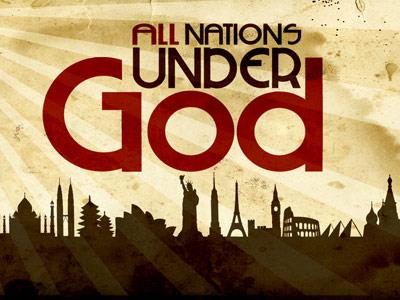-
Islam Series
Contributed by Don Hawks on Feb 9, 2004 (message contributor)
Summary: Part of the series on world religions inspired by Adma Hamilton’s similar series.
(Video Clips from Willow Creek: I Have a Friend Who thinks all Religions are the Same)
(Internet sites researched included in body of text)
SLIDE 1
Welcome, attendance pads
I continue the series of messages on Christianity and world religions. Today I will discuss Islam and as is the case in all of these sermons—I want to make this disclaimer. I am not an expert in this religion—this is only a summary of my study and research in this area.
So let me share some historical perspective on this religion.
SLIDE 2
The Story of Muhammad
Muhammad – lived 570 – 632 A.D.
Let’s review the timeline for Biblical events in relation to Muhammad. The NT was completed by 100 AD, so Muhammad was born after that in 570.
(Project timeline on screen).
The Qur’an was complied after his death in 632 AD.
SLIDE 3
Muhammad was born in what is known as Saudi Arabia in the city of Mecca. He lived in difficult circumstances. His father died before he was born and his mother when he was 6 years old. He went to live with his grandfather who died shortly thereafter. Then he was reared by an uncle. He grew up in a respected family but lived in poverty.
SLIDE 4
Mecca was the site of a sacred shrine “the Kabah” which was the center of idol worship in his day and time. The “Kabah” was a cubed shaped building—“Kabah” means cube. This square was consecrated by Abraham, the Muslims believe.
The Kabah contained a black stone (probably a meteorite) which is still regarded as a holy object by Muslims today.
SLIDE 5
Muhammad worked as a merchant since Mecca was the center of the trade caravans.
At the age of 25, Muhammad married his 40 year old, wealthy, widowed employer. His newfound wealth allowed him the leisure pursue his interest in religion. Each year he spent the month of Ramadan in a cave meditating. He was drawn to the Jews and Christians who worship only one God and not all the plethora of gods that were being worshiped in his city.
At the age of 40, (610 CE), he was visited in Mecca by the angel Gabriel.
According to Islamic tradition, different fragments of the Qur’an were revealed to Muhammad verbatim by the angel Gabriel over a period of 23 years (Surah 25:32; 17:106). After each occasion, Muhammad recited these words to those present. Many of Muhammad’s devout followers memorized these portions as they were revealed.
In Surah 73:1-7 we are told that Muhammad’s scribes wrote these revelations on “pieces of paper, stones, palm-leaves, shoulder blades, ribs and bits of leather.”
He developed the conviction that he had been ordained a Prophet and given the task of converting his countrymen from their pagan, polytheistic beliefs and what he regarded as moral decadence, idolatry, hedonism and materialism.
Eventually, he became disgusted with the idolatry that had permeated his society and attempted to rid Arabia of all idol worship.
The Arabian tribes disliked this and, as a result, forced him to leave Mecca after preaching against idolatry in that city. He then fled to Medina on July 16, 622 to establish his Muslim community. This became known as the migration of The Hijra—or Muhammad and his followers, including his wife.
This date also marks the beginning of the Muslim calendar. So this is not 2004 for the Muslims but the year 1424, which is based on a lunar calendar.
At first the people there welcomed him, but eventually they too turned against him. As a result, Mohammed gathered an army and conquered the surrounding tribes and forced them to accept his religion at sword point.
At this point, the messages he received about the Qur’an began to change—they became focused on ordering society and the laws of society. He now was more a political leader over an Islamic state than spiritual leader. Eventually he returned to Mecca after battles with armies there.
At the time of his death in 632 A.D., all of Arabia was under Mohammad’s control and ruled by the teaching of Islam. In only 100 years after his death, Islam had spread throughout Northern Africa and the Middle East; eventually spread and dominated Spain, Turkey, India and also part of China.
SLIDE 6
I. Essential Muslim Beliefs
The term “Islam” means “submission” or “surrendered” to the will of God. The person who submits is called a “Muslim,” or a submitted or surrendered one.
SLIDE 7
A. God’s Nature and How to Know God:
http://www.namb.net/resources/beliefbulletins/religions/islam.asp
Muslims believe that Allah is their God. He is numerically and absolutely one. God is beyond the understanding of man so that only his will may be revealed and known. He is confessed as the "merciful and compassionate one."
Today’s interview by Bill Hybels at Willow Creek Church is with Fisal Hammouda, a teacher and a leader in an Islamic center in Naperville, Illinois in the Chicago area. Hybels asks him to explain what the “God” of Islam is like. Who is the God of Islam? Watch this:

 Sermon Central
Sermon Central


